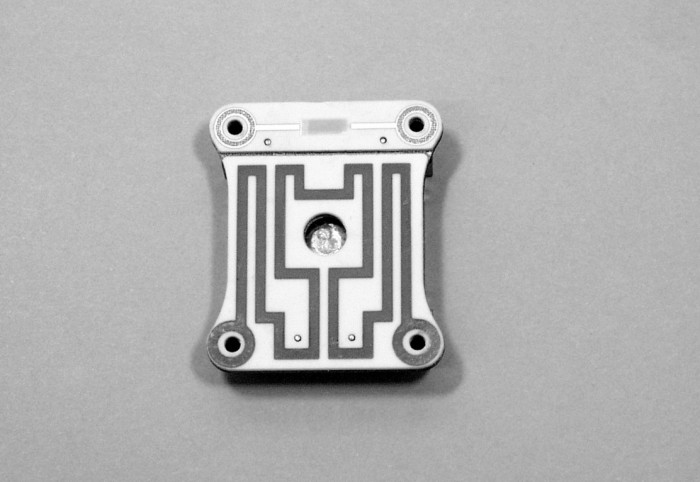IST built ultra-thin temperature sensors for outer space applications

Sensor on ceramic back plate
Photo by EMPA Switzerland
The Rosetta space craft was launched more than ten year ago by the European Space Agency with the purpose of performing a detailed study of the comet 67P/Churyumov-Gerasimenko. After reaching and orbiting the comet in August 2014, the lander of the mission, Philae, was launched in November 2014 and completed the mission.
The space craft itself launched over a decade ago, but the beginning of the project dates back a lot further. During this period of time, it is estimated that over 2000 people from all over Europe have worked on this project and its sub-projects. One of those is the instrument Rosina, which is a spectrometer for ion and neutral analysis.
Innovative Sensor Technology IST AG was approached by EMPA, who build two critical parts for this project. IST AG was asked to develop three individual, ultra-thin temperature sensors specifically customized for the application. “The requirements for the sensors include a high accuracy, long-term stability, as well as suitability for harsh environments”, says Dr. Jiri Holoubek, Chief Technical Officer at IST AG and responsible for the project at IST AG since the beginning. He continuous, “Whether it is for an application in outer space or on earth, there are three crucial parts in the development of a customized sensor in order to achieve the optimal results: understanding of customer needs and requirements, development and production.”
During the draft design phase, IST AG worked closely with EMPA to determine the specific requirements for the sensors. The R&D department and product specialist engineers at IST AG developed and tested the sensor layout technicalities and specifications to ensure the feasibility and a high performance level.
IST AG was finally able to develop and produce sensors, which not only last for over a decade, but also proof to work precise over a long period of time, even in outer space and millions of km away.
For more information, please visit http://www.ist-usadivision.com.
News Categories
- » NEWS HOME
- » Automation & Robotics
- » Industry 4.0
- » Material Handling
- » Sensors
- » Quality & Testing
- » Machine Vision
- » Laser & Optics
- » Metalworking
- » Motion Control & Drives
- » Hydraulics & Pneumatics
- » Process Industry
- » Renewable Energy
- » Agriculture
- » Home & Office Furniture
- » Environmental Tech

